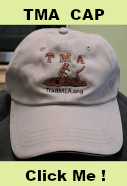i think this comes down to who , what where and when .
can we document what we know today as a short starter ?
no i donít believe we can .
Buy the above information can we document a military as advising the use of a hammer that was duel functioned as a short starter .
Ohm ya , I donít thing anyone can dispute that .as I have read German accounts that describe much the same thing with patched conical ď please donít ask me to list them , it would take me a very long time to find them ď
But can we actually say that a frontiersman or farmer with a long rifle carried a hammer to use as a short starter ?
The documentation just isnít there . If it is , its been lost and not as of yet found .
If it is found , can it be said to have been common . I donít think we can classify it as common with so many original bags and descriptions not including a description.
I have been fortunate enough to have had the opportunity to shoot a hand forged barrel for many , many years now .
I can tell you that if one is not careful, just the process of cutting a patch at the muzzle , can mar the muzzle .
I to can load without a short starter and the barrel is not coned .
But it requires a smaller ball . Its still very accurate for hunting situations by providing a 2 to 3 inch group .
But if I want target accuracy from that same load , I need a tighter fit ball which I cannot load with my thumb .
The softness of the muzzle concerned me greatly after owning the rifle for a very short time . So much so that I made a short starter specifically for that barrel .
To do this , I used a elk horn cut so the small starting nub would be place in the pith of the horn . With use , that area now has a deep area surrounding the nub which is a dowel with a 9mm shell casing on top to help protect it .
Even with this I have to be careful or I can mar the crown or throw up a burr on a rifling .
From this experience , I often look at the muzzles on original rifles . Not only looking for coning but also to see if I can see any signs of what would appear to me to be signs of the use of a short starter
I know , its in conclusive but like Michael the documentation is often conflicting
Case in point riflemen during the revolutionary war often did not stand and fight like line troops ?/ why .
Well its said that it was because their rifles did not carry the bayonet and they loaded much slower then a musket .
So do we not have to ask why they loaded slower ?
I would think if the reason was based around not using pre loads , a remedy would have been developed IE preloads with patched round balls . Or simply loading to a fouled barrel with no patch at all ??
So considering the consensuses that the rifle was slower to load then the musket , I think we have to ask why . Because frankly when I thumb a pre patched rb , I have no problems loading any just as fast as I can my smoothbore using paper cartridges.
But if I use my short starter . I can only get about Ĺ as many shots off in the same length of time
So I often wonder if the answer to this age old question isnít in proving or disproving the short starter of some kind of tool that we can associate as being used as a short starter , but in finding out why the loading procedure for a rifle back the was slower then that of a musket

?
I donít know . But it sure is a fun topic to hash over now and then




